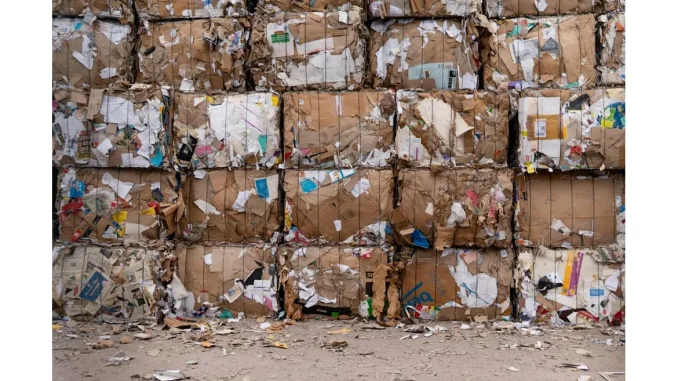
In the ever-evolving landscape of sustainability, the construction industry stands at a pivotal juncture. With the potential to significantly reduce waste and carbon emissions, the sector is increasingly embracing the circular economy—a system aimed at minimising waste and maximising resources. Nick Turner, Head of Surveying at Woodgate & Clark, highlights the untapped potential of material recycling within construction and insurance sectors and underscores the importance of integrating recycled materials into new projects. This comprehensive approach not only mitigates disposal costs but also ensures compliance with environmental regulations, positioning recycling as a cornerstone of sustainable construction.
A staggering 58% of landfill tonnage is attributed to soil waste, a frequently overlooked component of construction debris. Soil plays a crucial role in environmental health, and its reuse can lead to significant reductions in both landfill use and CO2 emissions. Turner emphasises the importance of better practices for reusing and recycling soil materials. “Awareness needs to reach those who work with these materials daily,” he asserts. By reusing excavated soil, the industry can create a beneficial ripple effect, ultimately supporting the natural environment. This practice not only conserves natural resources but also aligns with the principles of the circular economy.
Aggregates, including sand, gravel, and crushed stone, are foundational elements in construction projects. In the UK alone, approximately 275 million tonnes of aggregates are used annually, with around 70 million tonnes sourced from recycled materials. Turner highlights the immense potential for further recycling. “The potential to recycle more aggregates from construction and demolition wastes is huge,” he notes. By effectively separating materials such as concrete and stone from steel and soil, the industry can boost recycling rates and diminish landfill dependency. This practice not only conserves natural resources but also aligns with the principles of the circular economy.
While often associated with packaging, plastics are also extensively used in construction, making the sector the second-highest user of this material. Turner stresses the importance of recycling plastics, pointing out that they are a finite resource. “Recycling plastics after their initial use is crucial,” he states. However, builders face barriers, including a lack of incentives to change site operations. Turner believes that increasing the recovery and recycling of plastics will provide more raw materials for the recycling sector, fostering a more sustainable construction industry.
Glass is a highly recyclable material, boasting a 97% recyclability rate. Despite this, nearly 200,000 tonnes of glass from UK construction sites ended up in landfills in 2018. Turner suggests that simple operational changes can significantly reduce glass waste. “By recycling glass, the construction industry can create a sustainable stream of materials and avoid substantial landfill waste annually,” he explains. This shift not only supports environmental goals but also presents economic benefits through reduced disposal costs.
Wood constitutes 20-30% of all construction debris in the UK, and Turner highlights that as much as 10-15% of wood on new construction projects ends up in recycling or waste streams unused. Most timber types can be recycled, and simple changes in site operations can enhance wood recycling. By separating wood waste, securing storage areas, and arranging regular collections, builders can make a significant impact. Turner emphasises that these practices not only reduce waste but also support the circular economy by reintroducing valuable materials into the supply chain.
Bricks, with a lifespan exceeding 200 years, are another recyclable material. In 2019, the UK used 2.6 billion bricks, importing over 500 million due to domestic shortages. Turner advises that effective planning and using lime-based mortar can facilitate brick recovery and reuse. “By minimising cutting and overordering, builders can reduce brick and block waste,” he notes. This approach not only conserves resources but also supports the longevity and sustainability of construction materials.
Various other materials, such as floor and wall coverings, insulation, and packaging, contribute significantly to construction waste. Turner remarks that recycling options for these materials include selling to social enterprises, repurposing, and proper storage practices. By using labelled bins and training staff on waste management, builders can facilitate recycling and support the circular economy. These efforts not only reduce waste but also create opportunities for innovation and sustainable development within the industry.
The construction industry’s recycling potential is vast, yet currently underutilised. Materials such as soil, aggregates, plastics, glass, and wood present significant opportunities for recycling, but operational changes and increased awareness are crucial. Turner’s insights reveal that effective waste management can lead to cost savings, reduced environmental impact, and compliance with regulations. However, the industry faces challenges, including a lack of incentives, limited recycling options for certain materials, and the need for better planning and design.
The future of recycling in construction hinges on several factors. Turner believes that advancements in recycling technologies and increased regulatory pressures will drive the industry towards more sustainable practices. “The next decade will likely see a shift towards more comprehensive recycling programmes and greater use of recycled materials in new projects,” he predicts. Additionally, collaboration between builders, recyclers, and policymakers will be key to overcoming current barriers and unlocking the full potential of the circular economy in construction.
As the industry evolves, Turner envisions a future where recycling becomes an integral part of construction practices, leading to a more sustainable and environmentally friendly built environment. The construction sector’s journey towards sustainability is not just a necessity but an opportunity to innovate and create a lasting positive impact on the planet. Through concerted efforts and a commitment to the circular economy, the construction industry can pave the way for a greener, more sustainable future.


Be the first to comment